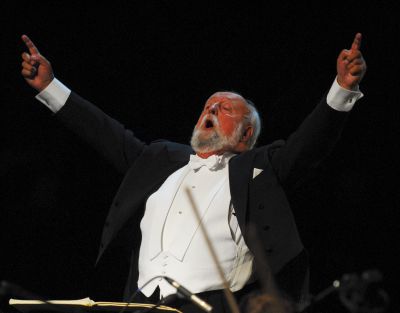Bronisław Huberman: From child prodigy to resistance fighter against National Socialism

From the winter of 1892/93, a scholarship allowed him to study in Berlin under the music conservatory’s new director, the violinist Carl Markees (1865-1926), who hailed from Switzerland and who had been a student of Joachim, and to study under Charles Grigorowitsch, a student of the Polish violinist Henryk Wieniawski (1835-1880). The timetable, which Joachim drew up, also included lessons given by harmony and piano teachers and a violin course with Joachim himself. On Joachim’s initiative, Bronisław attended a concert given by the Polish pianist Artur Rubinstein (1887-1982) who he also had to play for. “I had my last […] lesson at the age of 12”, he would later write in his paper “Aus der Werkstatt des Virtuosen”.[5] From that point on, he gave concerts in the Netherlands, Belgium, Romania, Paris and London. It is said that the Polish magnate, entrepreneur and philanthropist Władysław Zamoyski (1853-1924) provided the young violinist with the funds to buy a Stradivarius violin, which was stolen twice, once in 1919 from the hotel and for the final time in 1936 from a cloakroom. In January 1895, (Fig. 2) he caused a sensation in Vienna as the escort of the Spanish opera diva Adelina Patti (1843-1919), with a solo concert in the Saal Bösendorfer[6] and with the Johannes Brahms violin concert, which he gave in the presence of the composer himself and in front of Anton Bruckner, Johann Strauß and Gustav Mahler in the Großen Musikvereinssaal.[7] One month later, he received an offer for a guaranteed fee of an incredible 100,000 Austrian guilders to undertake a concert tour through the United States[8], which he began in 1896 (Fig. 3) and which continued into the following year. A tour of Russia followed in winter 1897/98. In spring 1898, the fifteen-year-old was so exhausted that he withdrew from public life for four years. (Fig. 4)
From 1902, Huberman was once again performing on orchestra stages throughout Europe. On several occasions he played in Wroclaw, where he performed the solo works of Johann Sebastian Bach in 1906.[9] In January 1908, he gave a concert in Berlin with the Mozart Orchestra in the Mozartsaal of the Neues Schauspielhaus.[10] In July 1910, he married the actress Elsa Marguérite Galafrés (1879-1977) in London. The marriage, which produced one son, ended in divorce in 1913. In the two decades that followed, world tours took Huberman to the music capitals of Europe, to Russia, America, Australia and Southeast Asia.[11] During the First World War, he lived predominantly in Germany and undertook the occasional tour to Poland and Austria. On three days in April 1917, he performed all Beethoven’s sonatas for violin and piano in the Berlin Sing-Akademie with the pianist and composer Eugen d’Albert (1864-1932).[12] He also gave regular concerts with the Berlin Philharmonic Orchestra which, from 1922, was directed by Furtwängler.
[5] Huberman 1912 (see His Own Papers), page 21
[6] “ […] however, a surprising fire flowed from the small but yet so great violin virtuoso Bronislaw Hubermann [sic!] who is set for a happy and revered future. […] To us and to everyone else, the little Hubermann seemed more like a magician than a common or garden child prodigy […] he is in reality an exceptional talent who is already achieving great things and promises monumental things in the future.” (Deutsches Volksblatt, Vienna, 1 February 1895, morning edition, page 1, online resource: http://anno.onb.ac.at/cgi-content/anno?aid=dvb&datum=18950201&query=%22Bronislaw%22+%22Huberman%22&ref=anno-search&seite=1). – On 20 March 1895, he once again gave a guest performance in the Saal Bösendorfer in Vienna where he performed the second violin concert by Henryk Wieniawski as well as other pieces (Saal Bösendorfer concert programme, sixth concert of 20 March 1895, online: http://bronislawhuberman.com/wp-content/uploads/2012/01/BN079_W.jpg)
[7] Platzer 2019 (see Literature), page 60
[8] “The young violin virtuoso Bronislaw Hubermann [sic!] was offered the enticing proposal to undertake a concert tour through America with a guaranteed return of 100,000 guilders. Hubermann’s mother and friends have not yet come to a decision.” (Neuigkeits-Welt-Blatt, Vienna, 22nd edition, No. 44, 22.2.1895, page 12, online resource: http://anno.onb.ac.at/cgi-content/anno?aid=nwb&datum=18950222&seite=12&zoom=33&query=%22Bronislaw%22%2B%22Huberman%22&ref=anno-search) – Based on current tables, the sum of 100,000 guilders would have been worth 1 million euros today.
[9] Maria Zduniak: Bachrezeption in Breslau im 19. Jahrhundert, in: Alte Musik als ästhetische Gegenwart. Bach, Händel, Schütz, published by Dietrich Berke and Dorothee Hanemann, Kassel 1987, page 147 f.
[10] Concert programme from 22 January 1908, Ernst Henschel Collection, British Library, London, http://www.concertprogrammes.org.uk/html/search/verb/GetRecord/4575/
[11] Von der Lühe 1997 (see Literature), page 10; von der Lühe 2017 (see Online)
[12] Concert programmes from 19, 21 and 23 April 1917, Ernst Henschel Collection, British Library, London, http://www.concertprogrammes.org.uk/html/search/verb/GetRecord/4580/












